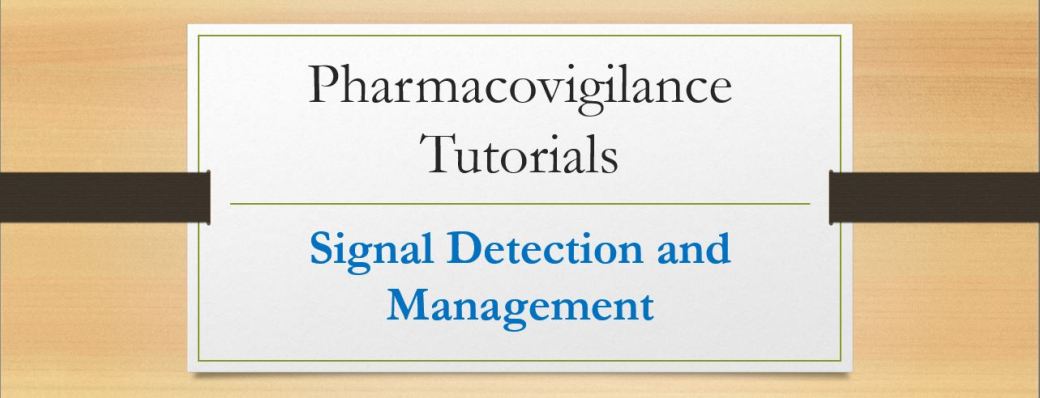
Definition
-
Signal: Reported information on a possible causal relationship between an adverse event and a drug, the relationship being previously unknown or incompletely documented.
Signal Management Process
As per the good Pharmacovigilance practice guidelines following were the methodologies which would be used for signal detection.
The signal management process covers all steps from detecting signals to recommending action(s) as follows:
- Signal detection
- Signal validation
- Signal analysis and prioritization
- Signal assessment
- Recommendation for action
- Exchange of information
Signal Detection
Following methodologies are used in signal detection process:
-
Review of individual case safety reports
-
Statistical analyses of large database
-
Combination of both ICSR review and statistical analyses
-
Review of individual case safety reports: A single report of a serious or severe adverse reaction (for eg., one case of toxic epidermal necrolysis, aplastic anaemia or liver transplant) may be sufficient to raise a signal and to take further action. A review of ICSR may consider:
-
Number of cases
-
The patient’s demographics
-
Suspect drug
-
Adverse reaction with clinical and temporal relationship
-
Causality and presence of all other factors
-
-
Statistical analyses of large database:
-
Signal detection is now increasingly based on a regular periodic monitoring of large databases of spontaneous reports of ADRs. Such databases allow generation of statistical reports presenting information on adverse reactions received over a defined time period for defined active substances or medicinal products.
-
Various methods have been developed to identify statistics of disproportionate reporting, i.e. higher reporting than expected for an suspected adverse reaction for an active substance/medicinal product of interest compared to all other active substances/medicinal products in the database, (expressed e.g. as a lower bound of the proportionate reporting ratio >1).
-
Given the limitations of these methods, statistics of disproportionate reporting alone do not necessarily indicate that there is a signal to be further investigated or that a causal association is present.
-
The periodicity at which statistical reports should be generated and reviewed may vary according to the active substance/medicinal product, its indication and any known potential or identified risks.
-
Combination of both ICSR review and statistical analyses:
-
Statistical reports may be designed to provide tools for identifying suspected adverse reactions that meet pre-defined criteria of frequency, severity, clinical importance, novelty or statistical association. Such filtering tools may facilitate the selection of ICSRs to be reviewed as a first step.
-
The thresholds used in this filtering process (for example, at least 3 cases reported) may vary according to the extent of usage of medicinal products and thus the potential public health impact.
Signal Validation
Signal validation is the process of evaluating the data supporting the detected signal in order to verifythat the available documentation contains sufficient evidence demonstrating the existence of a new potentially causal association or a new aspect of a known association, and therefore justifies further analysis.
To validate a signal the following should be taken into account:
• Clinical relevance including, for example:
-
strength of evidence for a causal effect (e.g. number of reports, exposure, temporal association, plausible mechanism, de/re-challenge, alternative explanation/confounders);
-
seriousness and severity of the reaction and its outcome;
-
novelty of the reaction (e.g. new and serious adverse reactions);
-
drug-drug interactions;
-
Reactions occurring in special populations.
• Previous awareness:
-
-
The extent to which information is already included in the summary of product characteristics (SPC) or patient leaflet;
-
Whether the association has already been assessed in a PSUR or RMP, or was discussed at the level of a scientific committee or has been subject to a regulatory procedure.
-
Signals for which the validity is not confirmed may deserve special attention in subsequent analyses i.e. it may be appropriate to continue to monitor the potential signal until there is enough evidence to confirm the signal.
Signal analysis and prioritization
A key element of the signal management process is to promptly identify validated signals with important public health impact or that may significantly affect the benefit-risk profile of the medicinal product in treated patients. These signals require urgent attention and need to be prioritized for further management without delay.
Signal assessment
The objective of signal assessment is to further evaluate a validated signal so as to identify the need for additional data collection or for any regulatory action.
Signals may need to be assessed at a broader level
Eg. Therapeutic or system organ class level
Recommendation of action
Signal assessment results in a recommendation that either no further action is required at this point in time or a further action is needed.
The recommendation for action may include a request for:
-
Immediate measures including the possibility of suspending the marketing authorization of the medicinal product;
-
Additional information to be provided by the marketing authorization holder, e.g. in order to confirm if a conclusion is valid for all indications and patient groups;
-
Periodic review of the signal, for example through PSURs (see Module VII);
-
Additional investigations or risk minimization activities;
-
An update of the product information through a regulatory procedure;
-
Conduct of a post-authorization safety study
Exchange of information
Information on validated signals, Emerging Safety Issues and the outcome of signal assessments should be exchanged between competent authorities and marketing authorization holders.
Marketing authorization holders should communicate signals that may have implications for public health and the benefit-risk profile of a product immediately to the competent authorities as an Emerging Safety Issue, and when appropriate this should include proposals for action.
The outcomes of signal assessment involving new or changed risks and risks that have an impact on the benefit-risk balance of the concerned active substance/medicinal products should be communicated to the public including health care professionals and patients as well as to the concerned marketing authorization holders.